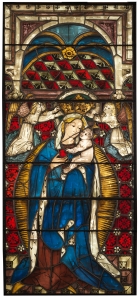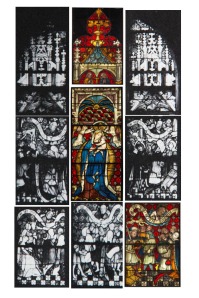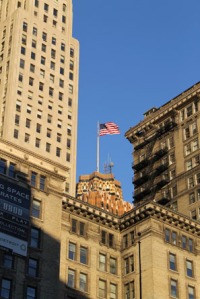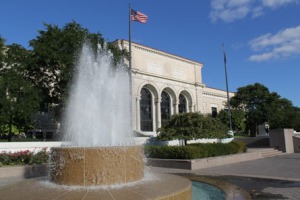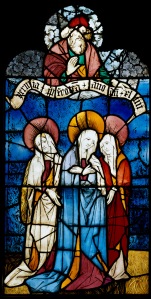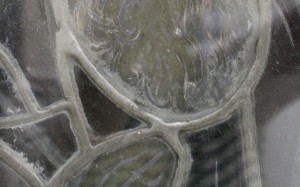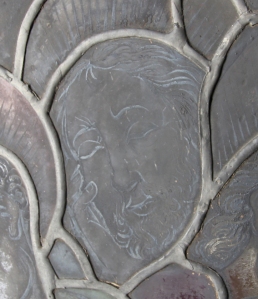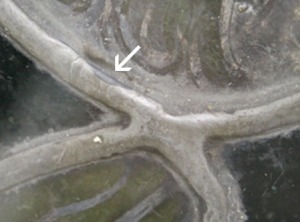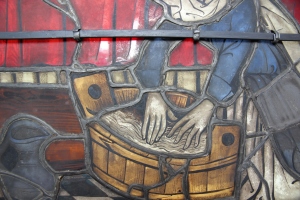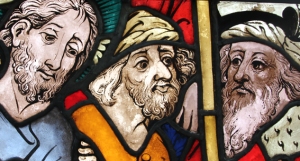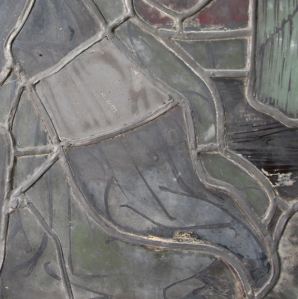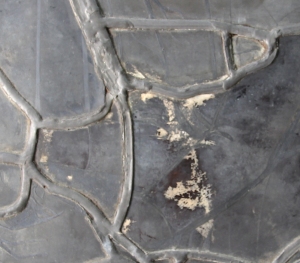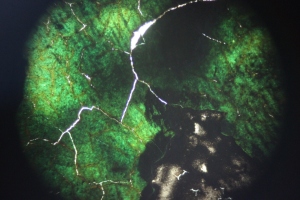Seaview Terrace is the other Mansion in Newport with a stained glass panel from Boppard. This enormous chateau style house was built in 1923 for Edson Bradley, who made his fortune in whiskey. At approximately 40,000 square feet with 63 rooms, it is the fifth largest of the Newport mansions.
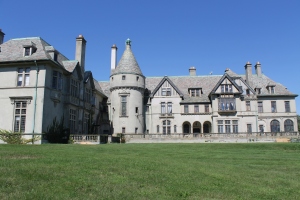
Allegedly it cost 2 million dollars to build but in 1949 it was sold for a mere $8000. It has had a very chequered history since then, serving as army officers headquarters, a girl’s school and as a musical conservatory and student residence for the Salve Regina University in Newport.
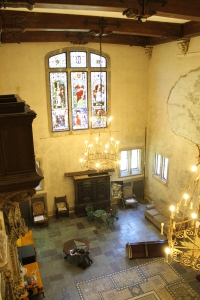
The Boppard panel is incorporated into a three light window which is placed high up in the great hall at Seaview. The stained glass in this window has been assembled to create a “gothic” effect regardless of provenance.
The hall and the rest of the house would originally have been filled with tapestries, armour, hunting trophies and other artefacts collected from all over Europe. Most of these treasures have now disappeared and overall the building is in a very poor state. However it makes up for that with a lot of atmosphere and it was utterly fascinating to be able to explore the house and discover all the locations with stained glass.
The Boppard panel here depicts St. John and Nicodemus and originally it would have been situated in the top right of the Tree of Jesse window, opposite the Three Marys that I saw in Detroit. Sadly, it has also suffered damage and deterioration.
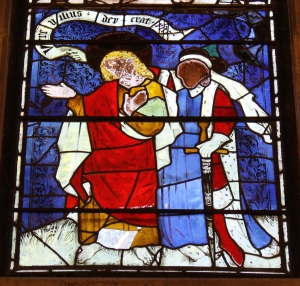
At the bottom of the panel is a gaping hole where glass is missing. This has been “patched” with acrylic glued on by silicone (not recommended but maybe the best temporary measure possible at the time). Much of the painted detail is lost and the face of Nicodemus is completely covered in some kind of corrosion product. In the face of St. John you can still see a few trace lines indicating features.


It is intriguing that at the base of the panel are white glasses with grass painted onto them in trace paint, but there is no green to be found.
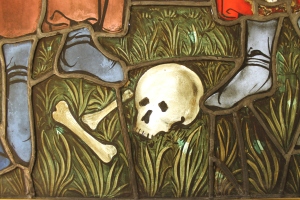
Some other Boppard panels have grass which is similarly depicted and there is always a green background colour. The green has variously been referred to as an enamel, but much of it has undergone several restoration campaigns and what was there originally probably deteriorated long ago.
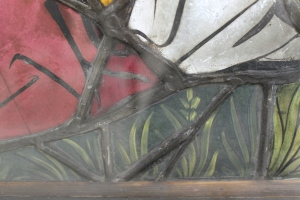
It is generally thought that enamels were not used on stained and leaded windows at the time when the Boppard panels were manufactured. But it is strange that (so far) I have not seen green grass painted with trace on green pot metal glass, which would be the straightforward thing to do. So either all of the glasses depicting grass are restorations, perhaps dating to the 15th century or our current information is wrong and green enamel was originally applied but it did not survive. The Seaview panel is interesting though because clearly, whatever was applied to colour the glass green did not survive the environmental conditions in the mansion.
Marie


